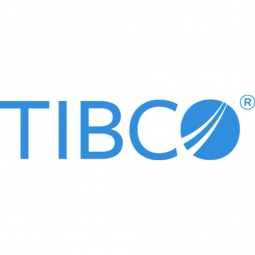公司规模
Large Corporate
地区
- Africa
国家
- South Africa
产品
- TIBCO Spotfire
- Health Command Centre
技术栈
- Advanced Data Visualization
- Strategic Analytics
实施规模
- Enterprise-wide Deployment
影响指标
- Productivity Improvements
- Customer Satisfaction
- Digital Expertise
技术
- 应用基础设施与中间件 - 数据可视化
- 分析与建模 - 预测分析
适用行业
- 医疗保健和医院
- 国家安全与国防
适用功能
- 商业运营
- 质量保证
用例
- 远程资产管理
服务
- 系统集成
- 数据科学服务
关于客户
BroadReach Healthcare is a global healthcare solutions provider focused on improving public health outcomes. The company operates in various regions, including Africa, where it addresses critical health issues such as HIV and TB. BroadReach collaborates with governments, NGOs, and donor agencies like USAID to enhance healthcare delivery through innovative solutions. The organization is committed to leveraging data and technology to empower healthcare professionals and administrators to make informed decisions, ultimately improving patient care and public health.
挑战
BroadReach faced a significant challenge in improving healthcare outcomes due to the fragmented nature of data across various clinics, hospitals, and NGOs. The delay in data reporting, especially for late-stage HIV and TB patients, was critical as it could take weeks to get a report, leading to severe health consequences. The primary challenge was to integrate and understand data from multiple sources quickly and effectively to make informed decisions that could save lives.
解决方案
In 2014, BroadReach launched its Health Command Centre for Africa, an online platform that leverages TIBCO Spotfire for strategic analytics and advanced data visualization. Spotfire was chosen for its exceptional visualization capabilities and comprehensive suite of supporting products. The Health Command Centre aims to transition to 'public health 2.0' by integrating data from various sources to provide a holistic view of healthcare performance across clinics, provinces, and countries. This platform enables real-time data access and intuitive visual presentations, allowing healthcare professionals to make quick, informed decisions.
运营影响
数量效益

Case Study missing?
Start adding your own!
Register with your work email and create a new case study profile for your business.
相关案例.

Case Study
Hospital Inventory Management
The hospital supply chain team is responsible for ensuring that the right medical supplies are readily available to clinicians when and where needed, and to do so in the most efficient manner possible. However, many of the systems and processes in use at the cancer center for supply chain management were not best suited to support these goals. Barcoding technology, a commonly used method for inventory management of medical supplies, is labor intensive, time consuming, does not provide real-time visibility into inventory levels and can be prone to error. Consequently, the lack of accurate and real-time visibility into inventory levels across multiple supply rooms in multiple hospital facilities creates additional inefficiency in the system causing over-ordering, hoarding, and wasted supplies. Other sources of waste and cost were also identified as candidates for improvement. Existing systems and processes did not provide adequate security for high-cost inventory within the hospital, which was another driver of cost. A lack of visibility into expiration dates for supplies resulted in supplies being wasted due to past expiry dates. Storage of supplies was also a key consideration given the location of the cancer center’s facilities in a dense urban setting, where space is always at a premium. In order to address the challenges outlined above, the hospital sought a solution that would provide real-time inventory information with high levels of accuracy, reduce the level of manual effort required and enable data driven decision making to ensure that the right supplies were readily available to clinicians in the right location at the right time.

Case Study
Gas Pipeline Monitoring System for Hospitals
This system integrator focuses on providing centralized gas pipeline monitoring systems for hospitals. The service they provide makes it possible for hospitals to reduce both maintenance and labor costs. Since hospitals may not have an existing network suitable for this type of system, GPRS communication provides an easy and ready-to-use solution for remote, distributed monitoring systems System Requirements - GPRS communication - Seamless connection with SCADA software - Simple, front-end control capability - Expandable I/O channels - Combine AI, DI, and DO channels

Case Study
Driving Digital Transformations for Vitro Diagnostic Medical Devices
Diagnostic devices play a vital role in helping to improve healthcare delivery. In fact, an estimated 60 percent of the world’s medical decisions are made with support from in vitrodiagnostics (IVD) solutions, such as those provided by Roche Diagnostics, an industry leader. As the demand for medical diagnostic services grows rapidly in hospitals and clinics across China, so does the market for IVD solutions. In addition, the typically high cost of these diagnostic devices means that comprehensive post-sales services are needed. Wanteed to improve three portions of thr IVD:1. Remotely monitor and manage IVD devices as fixed assets.2. Optimizing device availability with predictive maintenance.3. Recommending the best IVD solution for a customer’s needs.

Case Study
HaemoCloud Global Blood Management System
1) Deliver a connected digital product system to protect and increase the differentiated value of Haemonetics blood and plasma solutions. 2) Improve patient outcomes by increasing the efficiency of blood supply flows. 3) Navigate and satisfy a complex web of global regulatory compliance requirements. 4) Reduce costly and labor-intensive maintenance procedures.

Case Study
Cloud-based healthcare solution for Royal Philips
Royal Philips wanted to launch its cloud-based healthcare solution HealthSuite Digital Platform in China to deliver services to help cope with challenges related to urbanization and population growth. Philips wanted to achieve this goal by combining mobile, cloud computing and big data technologies. To bring this platform and product to market, Philips required cloud computing and local technical service capabilities in China, in addition to a flexible IT infrastructure that could handle user requests.








